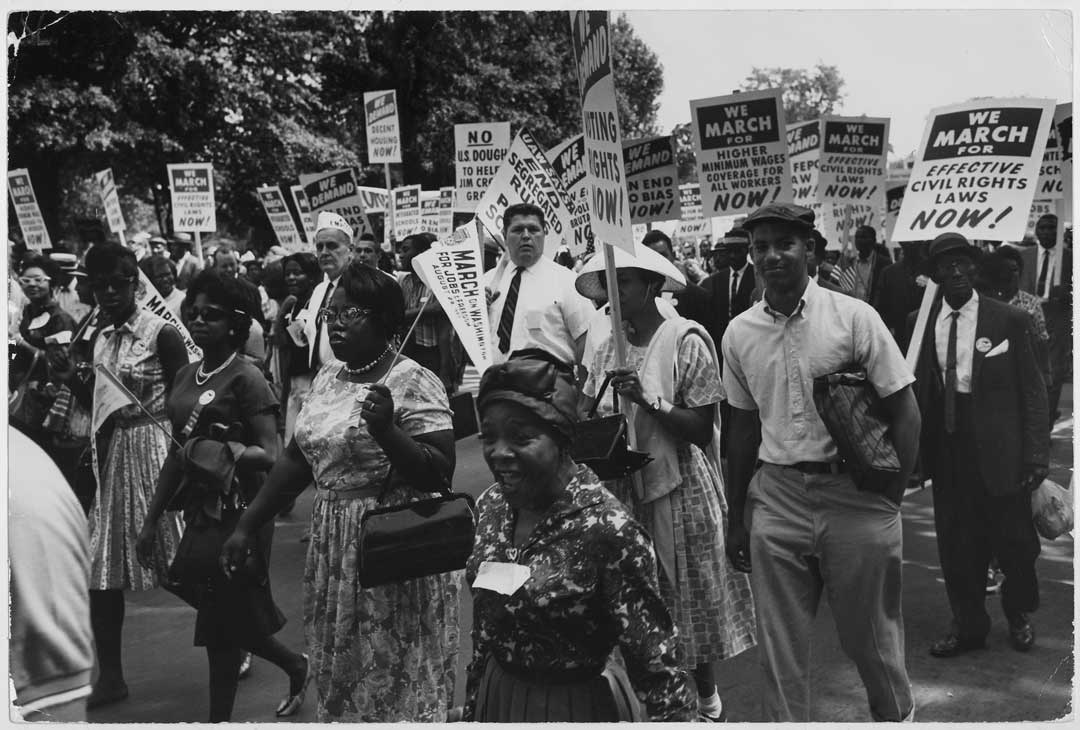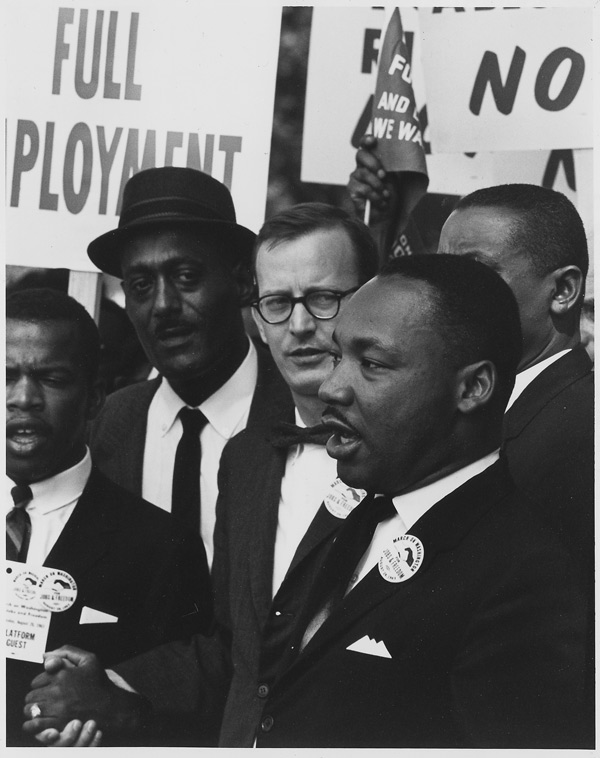
More Info
Citizens gather at the Civil Rights March on Washington, DC, August 28, 1963.
National Archives, Records of the U.S. Information Agency, Record Group 306 (National Archives Identifier 542044)
March on Washington demonstrates democracy at work


Dr. Martin Luther King Jr. speaks at the March on Washington. National Archives, Records of the U.S. Information Agency, Record Group 306 (National Archives Identifier 542014)
The rights of all Americans to freely assemble and to bring grievances to the government’s doorstep are intrinsic to American democracy and enshrined in the First Amendment. It’s what we’ve done for generations, perhaps most memorably on Aug. 28, 1963, when 250,000 people descended on Washington, D.C., to participate in the March on Washington for Jobs and Freedom. That day, the Rev. Martin Luther King Jr. delivered his “I Have a Dream” speech at the Lincoln Memorial, and it became a lasting touchstone of the civil rights movement.
But earlier that summer this now-seminal event was far from a sure thing. President John F. Kennedy initially opposed the march over fears of unrest that could derail civil rights legislation. After he decided to support the march, the Los Angeles Times received a message that its headquarters would be bombed unless the paper called the president a racial slur in print.
And during the planning, death threats targeted King and other key figures. Activists around the nation also received bomb threats. Meanwhile, opponents in Congress sought legislation to block the march. Some argued the demonstration was an “illegal assembly” that would cause violence and should be banned.
Despite this atmosphere of intimidation, the march took place peacefully, galvanized a movement and proceeded into the history books.
2020 march on Washington
This Friday, on the 57th anniversary of the march, the American tradition of public protest will continue when thousands of people again travel to Washington to call for racial justice. The Rev. Al Sharpton’s National Action Network organized the march in response to frustration over the killing of George Floyd in the custody of Minneapolis police in May, as well as other acts of violence against people of color. The Black Lives Matter movement also will march.
And just as in 1963, Friday’s demonstration faces challenges. Because of COVID-19 public health concerns, the event will include requirements for limited seating, social distancing, and other safety protocols. These concerns also prompted the NAACP to instead schedule a 2020 Virtual March on Washington, while the Movement for Black Lives will hold a virtual Black National Convention.
At NLP, we help young people understand the essential roles of the rights guaranteed by the First Amendment in a robust democracy. As Americans, we all must recognize the importance of these rights and ensure their protection for everyone.
